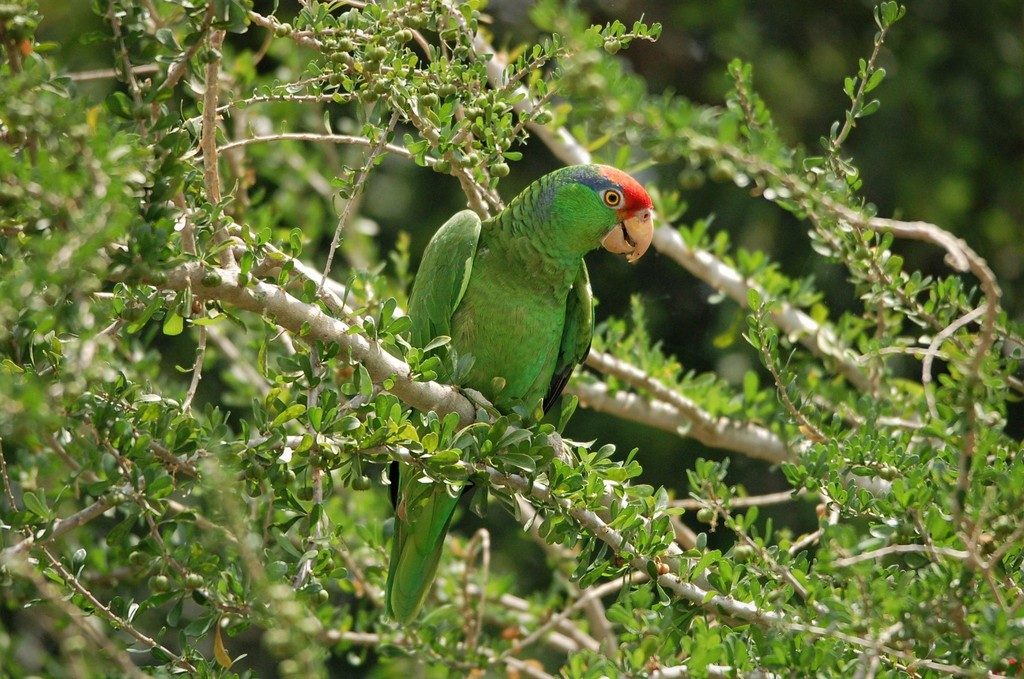
FAMILY
Psittacidae, one of the three true parrot families
NATIVE RANGE
Northeastern Mexico
INTRODUCED RANGE
Texas, California, Florida, Hawaii (Oahu), Puerto Rico
Important Environmental Factors

Moderate to high summer temperatures (>20 degrees Celsius)

High variation in seasonal rainfall

Any level of paved or compacted ground
Appearance
These parrots are named for their bright red foreheads, though females and young parrots have less red coloring on their crown. They are mainly green in color, with a notably large head and large, yellow bill.
Habitat and Behavior
In their native range, red-crowned parrots inhabit the lush, vegetated areas in arid lowlands and foothills, including lowland deciduous forests, pine-oak woodland, and large trees in agricultural fields. Where they have been introduced, they can also be found in suburban areas. They feed primarily on fruit from whichever tree is dominant in their particular habitat. During the winter, large flocks of parrots migrate south and to higher elevations.
Status in Native Range
The red-crowned parrot is endangered in its native range, and populations are declining rapidly. There are multiple reasons for the decline in its population, including habitat loss (e.g. due to agriculture) and exploitation (for cage bird trade).
Impact in California
Wild populations of red-crowned parrots have become established in California, Florida, Puerto Rico, and Hawaii. The feral California population was founded by parrots released in Pasadena in 1963 [1]. The parrots are not considered invasive, and their potential harmful impacts on native species and ecosystems are not clear [2].

Data source:
Species records provided by eBird.
Acknowledgements:
We would like to thank Ashley Campfield for her research assistance.
References:
- Mori et al. (2017) in Animal Biodiversity and Conservation 40(1).
- Avery and Tillman (2005) in Wildlife Damage Management Conferences – Proceedings 87.